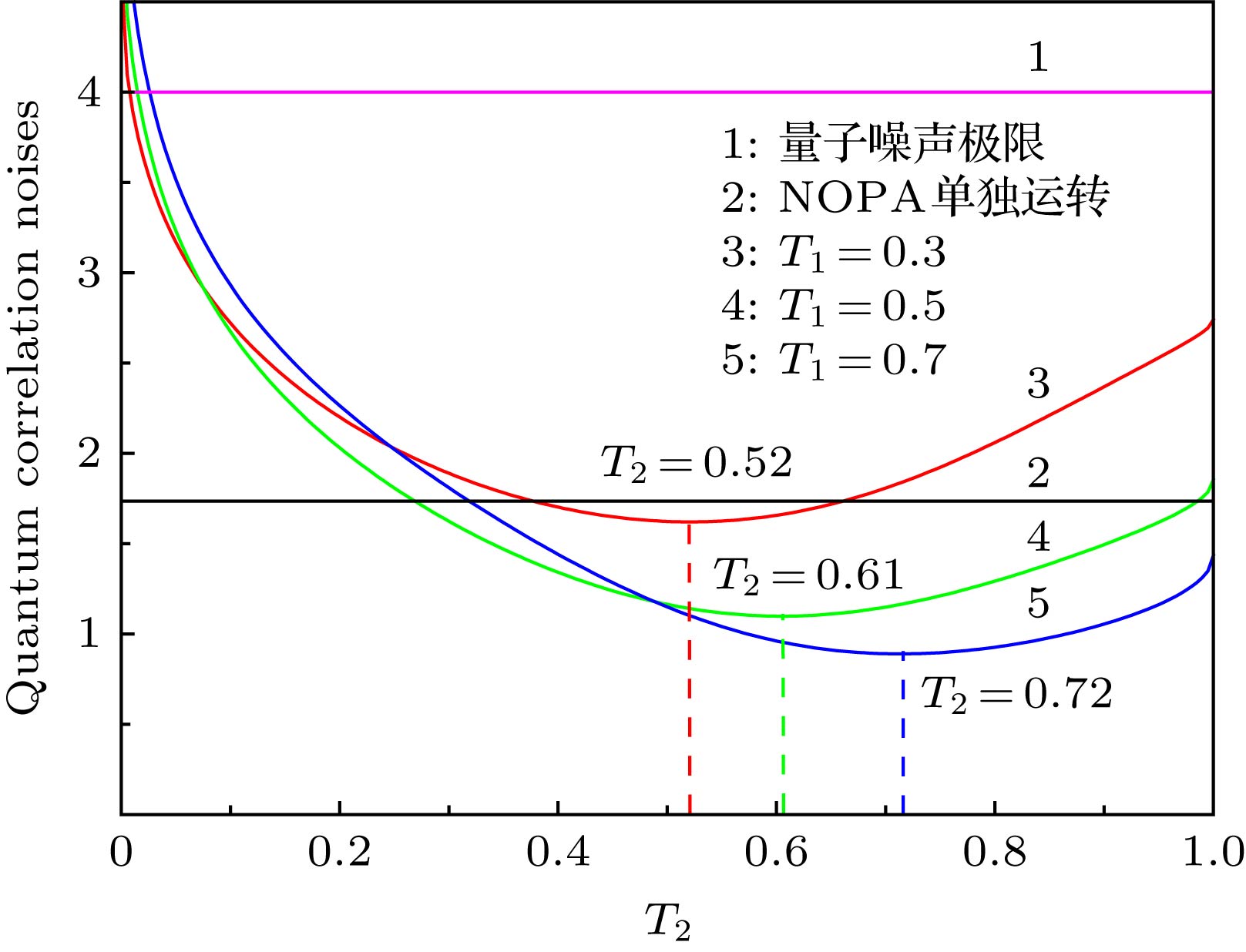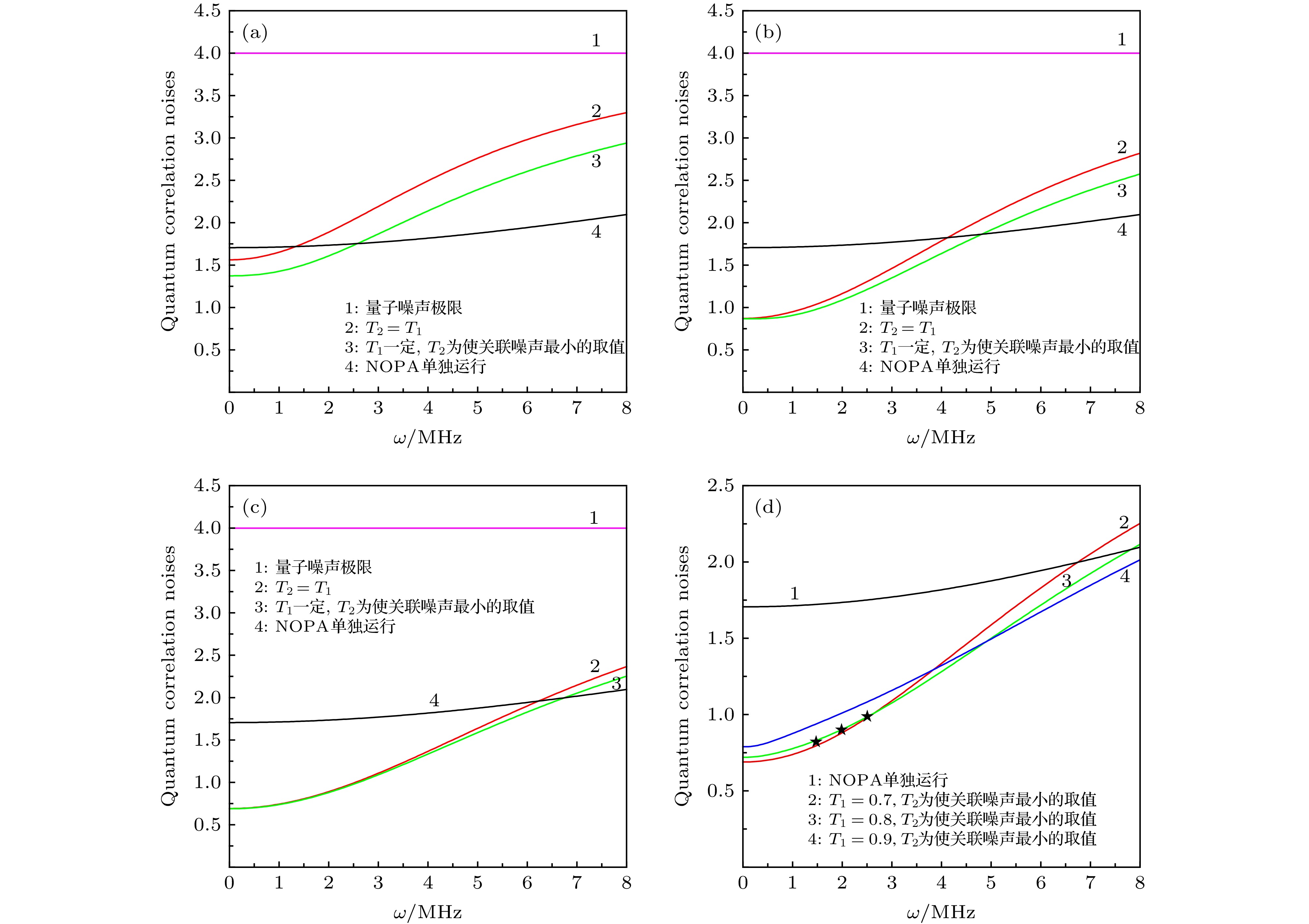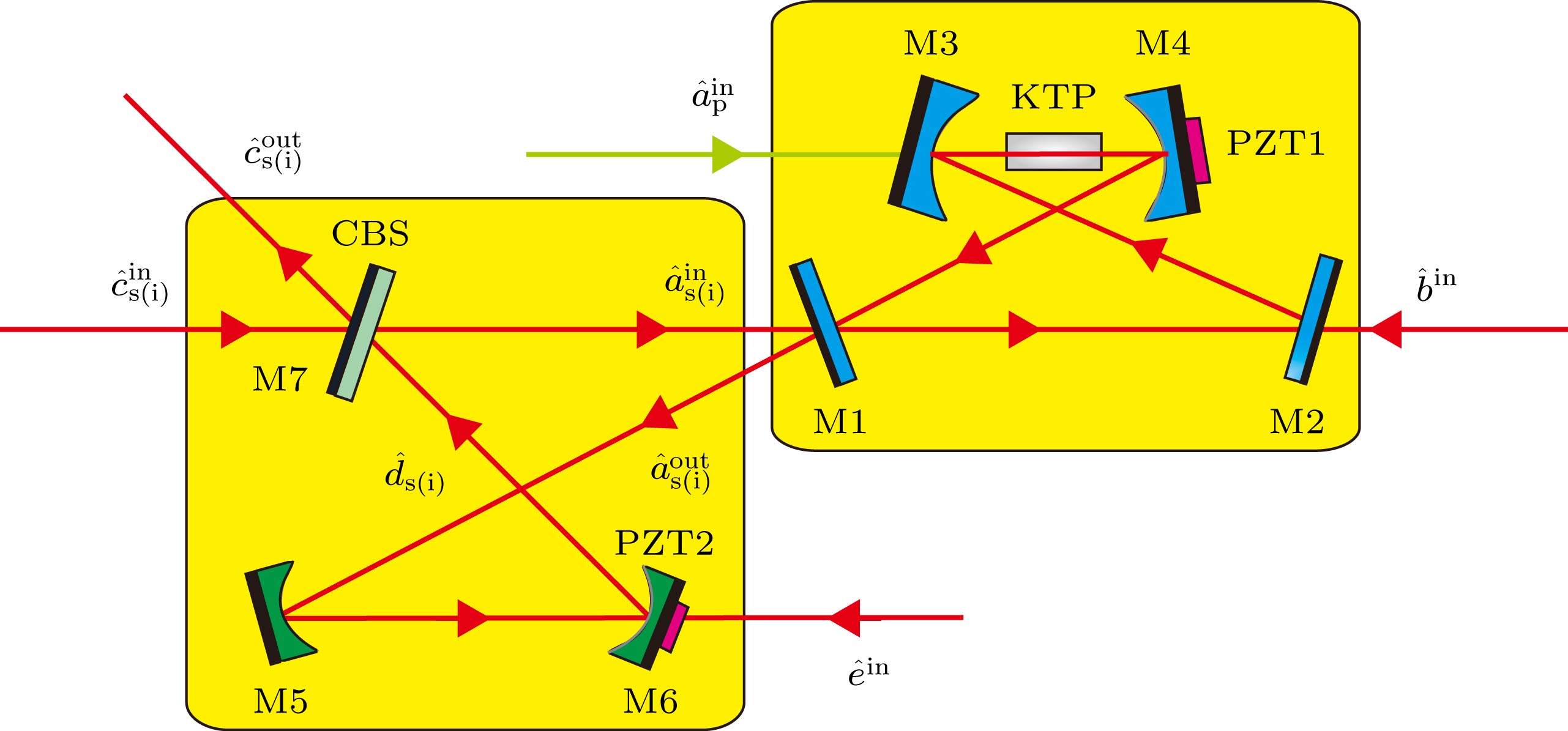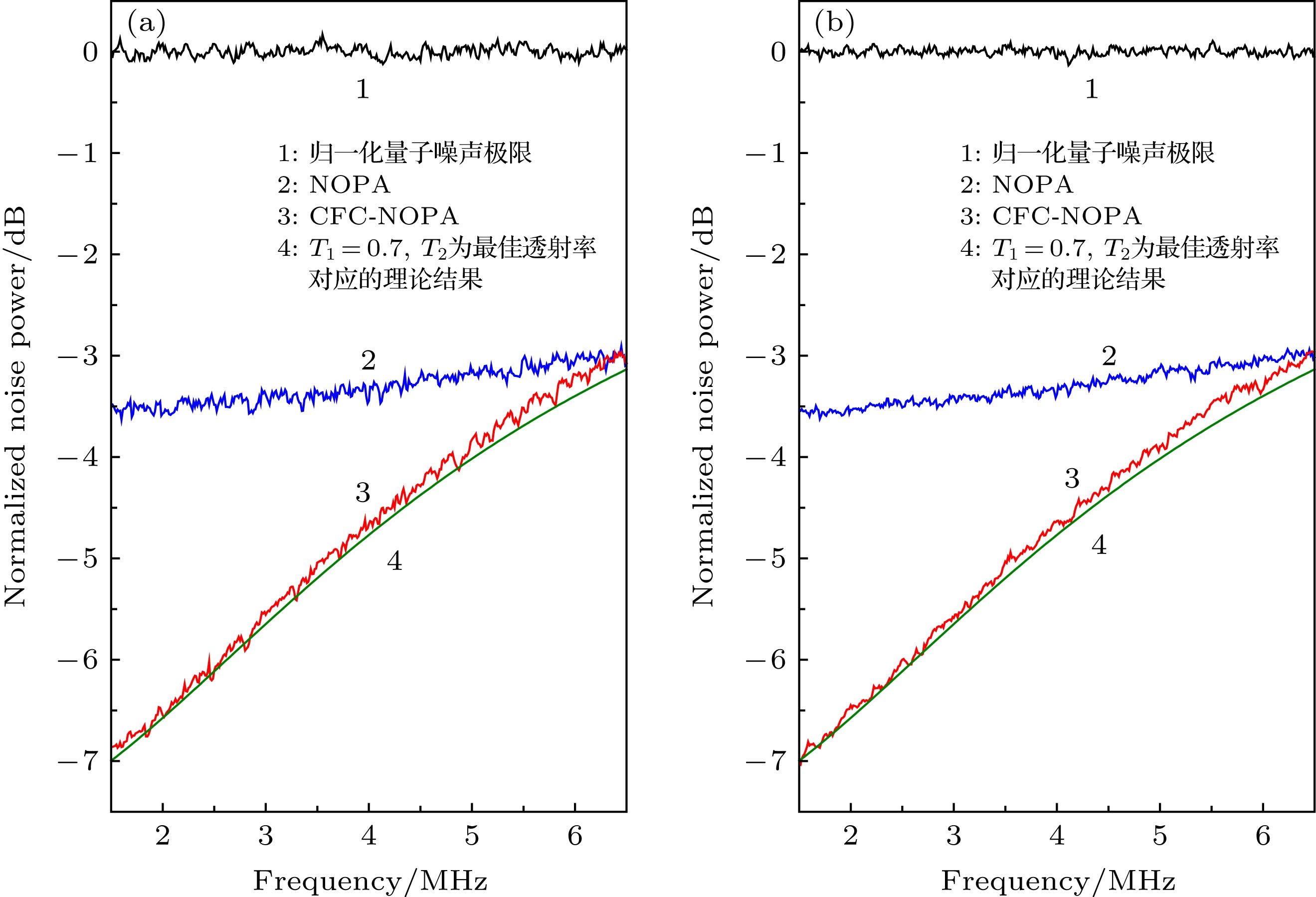-
基于非测量的量子相干反馈控制系统不会引入额外的噪声, 可以用于稳定、操控和改善多种量子系统的性能. 利用相干反馈的方法可以操控非简并光学参量放大器, 在一定条件下能够增强其输出Einstein-Podolsky-Rosen (EPR)纠缠态光场的纠缠度. 相干反馈控制系统中的核心光学元件是控制耦合镜, 其透射率的选取直接影响反馈控制的效果. 本文针对控制耦合镜对偏振相互垂直的种子光场透射率不同的情况, 从理论上分析了该情况对相干反馈控制效果的影响, 得出相干反馈的正作用达到最佳时对控制镜透射率的要求, 理论分析与实验结果相吻合. 同时分析了相干反馈控制效果随其他物理参量的变化关系, 得出系统进一步优化的实验条件. 为今后相干反馈控制系统中物理参量的选择提供依据, 也为利用相干反馈操控更多的量子系统提供参考.
-
关键词:
- Einstein-Podolsky-Rosen纠缠态光场 /
- 相干反馈控制 /
- 控制耦合镜 /
- 纠缠增强
Entangled state of light with quantum correlations between amplitude and phase quadratures is a necessary quantum resource in optical continuous variable (CV) quantum information systems. The CV Einstein-Podolsky-Rosen (EPR) entangled optical field is one of the most basic quantum resources, which can be generated by a non-degenerate optical parametric amplifier (NOPA) operated below the threshold pump power. Manipulating the EPR entangled state of light effectively can break through the limitation of the imperfect performance of optical components in optical cavities and then further improve the entanglement level under certain conditions. So it is necessary to find out an effective optical scheme of manipulating quantum state of light. The non-measurement based coherent feedback control (CFC) system without introducing any extra noise into the controlled system, can be used to stabilize, control and improve the performance of various quantum systems. Only by selecting the right experimental parameters can the CFC system play its positive role in reaching a maximum efficacy. The key optical component, i.e. optical controller in CFC system, greatly affects the final manipulation effects. In 2015, using the method of CFC, our research team experimentally realized the enhancement of entanglement to different levels by changing the optical controller with different transmissivity values for seed optical beams. At the same time, the threshold pump power of the NOPA is reduced to different levels also. Due to the technical reasons, the transmissivity of the optical controller selected in the experiment is almost the same for the signal optical field and idle optical field. In this paper, we emphasize the condition that the transmissivity of the optical controller for the signal optical field is different from that for idle optical field. Firstly, we theoretically study the final effects of manipulating entanglement source by using the coherent feedback optical cavity under the above conditions. It is concluded that if the transmittance of control beam splitter (CBS) is low, the feedback control optical cavity works best when the optical controller has different transmissivity for signal optical beam and idle optical beam, and that if the transmittance of CBS is high, the transmittance of the optical controller for signal optical beam almost equals that for idle optical beam to make the feedback control optical cavity work best. Then we theoretically investigate the dependence of the quantum correlation noise of the quadrature amplitude and quadrature phase of the output optical fields from CFC-NOPA system on other physical parameters. Combining with the actual experimental conditions, we can find the optimal transmissivity of the optical controller and appropriate range of frequency to optimize the effects of CFC, which provides the basis for correctly selecting the actual experimental parameters in CFC systems. Theoretical analysis results also show that with the higher input and output coupling efficiency and higher nonlinear conversion efficiency of NOPA, the entangled state of light with higher entanglement degree can be obtained experimentally. This provides the reference for obtaining better quantum resources needed for studying the CV quantum information.-
Keywords:
- Einstein-Podolsky-Rosen entangled optical fields /
- coherent feedback control /
- optical controller /
- entanglement enhancement
[1] Zhou Y Y, Yu J, Yan Z H, Jia X J, Zhang J, Xie C D, Peng K C 2018 Phys. Rev. Lett. 121 150502
 Google Scholar
Google Scholar
[2] 刘艳红, 吴量, 闫智辉, 贾晓军, 彭堃墀 2019 物理学报 68 034202
 Google Scholar
Google Scholar
Liu Y H, Wu L, Yan Z H, Jia X J, Peng K C 2019 Acta Phys. Sin. 68 034202
 Google Scholar
Google Scholar
[3] 周瑶瑶, 田剑锋, 闫智辉, 贾晓军 2019 物理学报 68 064205
 Google Scholar
Google Scholar
Zhou Y Y, Tian J F, Yan Z H, Jia X J 2019 Acta Phys. Sin. 68 064205
 Google Scholar
Google Scholar
[4] Agarwal G S 2006 Phys. Rev. Lett. 97 023601
 Google Scholar
Google Scholar
[5] Zhang J, Ye C G, Gao F, Xiao M 2008 Phys. Rev. Lett. 101 233602
 Google Scholar
Google Scholar
[6] Chen H X, Zhang J 2009 Phys. Rev. A 79 063826
 Google Scholar
Google Scholar
[7] Shang Y N, Jia X J, Shen Y M, Xie C D, Peng K C 2010 Opt. Lett. 35 853
 Google Scholar
Google Scholar
[8] Yan Z H, Jia X J, Su X L, Duan Z Y, Xie C D, Peng K C 2012 Phys. Rev. A 85 040305(R)
 Google Scholar
Google Scholar
[9] Zhou Z F, Liu C J, Fang Y M, Zhou J, Glasser R T, Chen L Q, Jing J T, Zhang W P 2012 Appl. Phys. Lett. 101 191113
 Google Scholar
Google Scholar
[10] Vanderbruggen T, Kohlhaas R, Bertoldi A, Bernon S, Aspect A, Landragin A, Bouyer P 2013 Phys. Rev. Lett. 110 210503
 Google Scholar
Google Scholar
[11] Yan Z H, Jia X J 2017 Quantum Sci. Technol. 2 024003
 Google Scholar
Google Scholar
[12] Bushev P, Rotter D, Wilson A, Dubin F, Becher C, Eschner J, Blatt R, Steixner V, Rabl P, Zoller P 2006 Phys. Rev. Lett. 96 043003
 Google Scholar
Google Scholar
[13] Kerckhoff J, Andrews R W, Ku H S, Kindel W F, Cicak K, Simmonds R W, Lehnert K W 2013 Phys. Rev. X 3 021013
[14] Vijay R, Macklin C, Slichter D H, Weber S J, Murch K W, Naik R, Korotkov A N, Siddiqi I 2012 Nature 490 77
 Google Scholar
Google Scholar
[15] Ristè D, Dukalski M, Watson C A, Lange G D, Tiggelman M J, Blanter Y M, Lehnert K W, Schouten R N, DiCarlo L 2013 Nature 502 350
 Google Scholar
Google Scholar
[16] Vuglar S L, Petersen I R 2017 IEEE Trans. Autom. Control 62 998
 Google Scholar
Google Scholar
[17] Chung H W, Guha S, Zheng L 2017 Phys. Rev. A 96 012320
 Google Scholar
Google Scholar
[18] Wiseman H M, Milburn G J 2009 Quantum Measurement and Control (the first version) (England: Cambridge University Press) pp216−237
[19] Sayrin C, Dotsenko I, Zhou X X, Peaudecerf B, Rybarczyk T, Gleyzes S, Rouchon P, Mirrahimi M, Amini H, Brune M, Raimond J, Haroche S 2011 Nature 477 73
 Google Scholar
Google Scholar
[20] Inoue R, Tanaka S I R, Namiki R, Sagawa T, Takahash Y 2013 Phys. Rev. Lett. 110 163602
 Google Scholar
Google Scholar
[21] Wiseman H M, Milburn G J 1994 Phys. Rev. A 49 4110
 Google Scholar
Google Scholar
[22] Nelson R J, Weinstein Y, Cory D, Lloyd S 2000 Phys. Rev. Lett. 85 3045
 Google Scholar
Google Scholar
[23] Hamerly R, Mabuchi H 2012 Phys. Rev. Lett. 109 173602
 Google Scholar
Google Scholar
[24] Mabuchi H 2008 Phys. Rev. A 78 032323
 Google Scholar
Google Scholar
[25] Dong D Y, Petersen I R 2010 IET Control Theory A 4 2651
 Google Scholar
Google Scholar
[26] Jacobs K, Wang X, Wiseman H M 2014 New J. Phys. 16 073036
 Google Scholar
Google Scholar
[27] Yamamoto N 2014 Phys. Rev. X 4 041029
[28] Gough J E, Wildfeuer S 2009 Phys. Rev. A 80 042107
 Google Scholar
Google Scholar
[29] Iida S, Yukawa M, Yonezawa H, Yamamoto N, Furusawa A 2012 IEEE Trans. on Automat. Contr. 57 2045
 Google Scholar
Google Scholar
[30] Crisafulli O, Tezak N, Soh D B S, Armen M A, Mabuchi H 2013 Opt. Express 21 18371
 Google Scholar
Google Scholar
[31] Kerchhoff J, Nurdin H I, Pavlichin D, Mabuchi H 2010 Phys. Rev. Lett. 105 040502
 Google Scholar
Google Scholar
[32] Wang D, Xia C Q, Wang Q J, Wu Y, Liu F, Zhang Y, Xiao M 2015 Phys. Rev. B 91 121406(R)
 Google Scholar
Google Scholar
[33] Zhou Y Y, Jia X J, Li F, Yu J, Xie C D, Peng K C 2015 Sci. Rep. 5 11132
 Google Scholar
Google Scholar
[34] Duan L M, Giedke G, Cirac J I, Zoller P 2000 Phys. Rev. Lett. 84 2722
 Google Scholar
Google Scholar
[35] Simon R 2000 Phys. Rev. Lett. 84 2726
 Google Scholar
Google Scholar
-
图 2 CFC-NOPA系统输出光场正交分量之间的量子关联噪声与CBS对闲置光场的透射率之间的曲线关系, 虚线分别表示各个曲线的关联噪声值最小时T2的取值大小
Fig. 2. Quantum correlation noises of two quadrature components for two output beams from CFC-NOPA system versus the transmissivity of CBS for idle optical field. Each dashed curve represents the value of T2 when the quantum correlation noises of each curve is the minimum.
图 3 CFC-NOPA系统输出光场正交分量之间的量子关联噪声随分析频率的变化曲线 (a) 透射率T1 = 0.3; (b) 透射率T1 = 0.5; (c) 透射率T1 = 0.7; (d)透射率T1 = 0.7, 0.8, 0.9
Fig. 3. Dependences of the quantum correlation noises of two quadrature components for two output beams from CFC-NOPA system on analysis frequency: (a) Transmissivity T1 = 0.3; (b) transmissivity T1 = 0.5; (c) transmissivity T1 = 0.7; (d) transmissivity T1 = 0.7, 0.8, 0.9.
图 4 CFC-NOPA系统输出光场正交分量之间的量子关联噪声随NOPA输出镜透射率的变化曲线 红色虚线表示曲线1取最小值时
${T{'}}$ 的大小; 蓝色虚线表示曲线2的取值小于曲线1的最小值时${T{'}}$ 的临界值大小; 绿色虚线表示曲线3的取值小于曲线2的最小值时${T{'}}$ 的临界值Fig. 4. Quantum correlation noises of two quadrature components for two output beams from CFC-NOPA system versus transmissivity of output coupler of NOPA. The red dashed curve represents the value of
${T{'}}$ when curve 1 takes the minimum. The blue dashed curves represent the critical value of${T{'}}$ when the value of curve 2 is less than the minimum value of curve 1. The green dashed curves represent the critical value of${T{'}}$ when the value of curve 3 is less than the minimum value of curve 2.图 7 实验测量结果图, SA: RBW 10 kHz; VBW 100 Hz (a)正交振幅分量和的量子噪声功率; (b)正交位相分量差的量子噪声功率
Fig. 7. Diagram of experimental measurement results: (a) The measured amplitude-sum correlation variances noise powers of the output beams; (b) the measured phase-difference correlation variances noise powers of the output beams. The measurement parameters of SA: RBW 10 kHz; VBW 100 Hz.
-
[1] Zhou Y Y, Yu J, Yan Z H, Jia X J, Zhang J, Xie C D, Peng K C 2018 Phys. Rev. Lett. 121 150502
 Google Scholar
Google Scholar
[2] 刘艳红, 吴量, 闫智辉, 贾晓军, 彭堃墀 2019 物理学报 68 034202
 Google Scholar
Google Scholar
Liu Y H, Wu L, Yan Z H, Jia X J, Peng K C 2019 Acta Phys. Sin. 68 034202
 Google Scholar
Google Scholar
[3] 周瑶瑶, 田剑锋, 闫智辉, 贾晓军 2019 物理学报 68 064205
 Google Scholar
Google Scholar
Zhou Y Y, Tian J F, Yan Z H, Jia X J 2019 Acta Phys. Sin. 68 064205
 Google Scholar
Google Scholar
[4] Agarwal G S 2006 Phys. Rev. Lett. 97 023601
 Google Scholar
Google Scholar
[5] Zhang J, Ye C G, Gao F, Xiao M 2008 Phys. Rev. Lett. 101 233602
 Google Scholar
Google Scholar
[6] Chen H X, Zhang J 2009 Phys. Rev. A 79 063826
 Google Scholar
Google Scholar
[7] Shang Y N, Jia X J, Shen Y M, Xie C D, Peng K C 2010 Opt. Lett. 35 853
 Google Scholar
Google Scholar
[8] Yan Z H, Jia X J, Su X L, Duan Z Y, Xie C D, Peng K C 2012 Phys. Rev. A 85 040305(R)
 Google Scholar
Google Scholar
[9] Zhou Z F, Liu C J, Fang Y M, Zhou J, Glasser R T, Chen L Q, Jing J T, Zhang W P 2012 Appl. Phys. Lett. 101 191113
 Google Scholar
Google Scholar
[10] Vanderbruggen T, Kohlhaas R, Bertoldi A, Bernon S, Aspect A, Landragin A, Bouyer P 2013 Phys. Rev. Lett. 110 210503
 Google Scholar
Google Scholar
[11] Yan Z H, Jia X J 2017 Quantum Sci. Technol. 2 024003
 Google Scholar
Google Scholar
[12] Bushev P, Rotter D, Wilson A, Dubin F, Becher C, Eschner J, Blatt R, Steixner V, Rabl P, Zoller P 2006 Phys. Rev. Lett. 96 043003
 Google Scholar
Google Scholar
[13] Kerckhoff J, Andrews R W, Ku H S, Kindel W F, Cicak K, Simmonds R W, Lehnert K W 2013 Phys. Rev. X 3 021013
[14] Vijay R, Macklin C, Slichter D H, Weber S J, Murch K W, Naik R, Korotkov A N, Siddiqi I 2012 Nature 490 77
 Google Scholar
Google Scholar
[15] Ristè D, Dukalski M, Watson C A, Lange G D, Tiggelman M J, Blanter Y M, Lehnert K W, Schouten R N, DiCarlo L 2013 Nature 502 350
 Google Scholar
Google Scholar
[16] Vuglar S L, Petersen I R 2017 IEEE Trans. Autom. Control 62 998
 Google Scholar
Google Scholar
[17] Chung H W, Guha S, Zheng L 2017 Phys. Rev. A 96 012320
 Google Scholar
Google Scholar
[18] Wiseman H M, Milburn G J 2009 Quantum Measurement and Control (the first version) (England: Cambridge University Press) pp216−237
[19] Sayrin C, Dotsenko I, Zhou X X, Peaudecerf B, Rybarczyk T, Gleyzes S, Rouchon P, Mirrahimi M, Amini H, Brune M, Raimond J, Haroche S 2011 Nature 477 73
 Google Scholar
Google Scholar
[20] Inoue R, Tanaka S I R, Namiki R, Sagawa T, Takahash Y 2013 Phys. Rev. Lett. 110 163602
 Google Scholar
Google Scholar
[21] Wiseman H M, Milburn G J 1994 Phys. Rev. A 49 4110
 Google Scholar
Google Scholar
[22] Nelson R J, Weinstein Y, Cory D, Lloyd S 2000 Phys. Rev. Lett. 85 3045
 Google Scholar
Google Scholar
[23] Hamerly R, Mabuchi H 2012 Phys. Rev. Lett. 109 173602
 Google Scholar
Google Scholar
[24] Mabuchi H 2008 Phys. Rev. A 78 032323
 Google Scholar
Google Scholar
[25] Dong D Y, Petersen I R 2010 IET Control Theory A 4 2651
 Google Scholar
Google Scholar
[26] Jacobs K, Wang X, Wiseman H M 2014 New J. Phys. 16 073036
 Google Scholar
Google Scholar
[27] Yamamoto N 2014 Phys. Rev. X 4 041029
[28] Gough J E, Wildfeuer S 2009 Phys. Rev. A 80 042107
 Google Scholar
Google Scholar
[29] Iida S, Yukawa M, Yonezawa H, Yamamoto N, Furusawa A 2012 IEEE Trans. on Automat. Contr. 57 2045
 Google Scholar
Google Scholar
[30] Crisafulli O, Tezak N, Soh D B S, Armen M A, Mabuchi H 2013 Opt. Express 21 18371
 Google Scholar
Google Scholar
[31] Kerchhoff J, Nurdin H I, Pavlichin D, Mabuchi H 2010 Phys. Rev. Lett. 105 040502
 Google Scholar
Google Scholar
[32] Wang D, Xia C Q, Wang Q J, Wu Y, Liu F, Zhang Y, Xiao M 2015 Phys. Rev. B 91 121406(R)
 Google Scholar
Google Scholar
[33] Zhou Y Y, Jia X J, Li F, Yu J, Xie C D, Peng K C 2015 Sci. Rep. 5 11132
 Google Scholar
Google Scholar
[34] Duan L M, Giedke G, Cirac J I, Zoller P 2000 Phys. Rev. Lett. 84 2722
 Google Scholar
Google Scholar
[35] Simon R 2000 Phys. Rev. Lett. 84 2726
 Google Scholar
Google Scholar
计量
- 文章访问数: 10177
- PDF下载量: 81
- 被引次数: 0













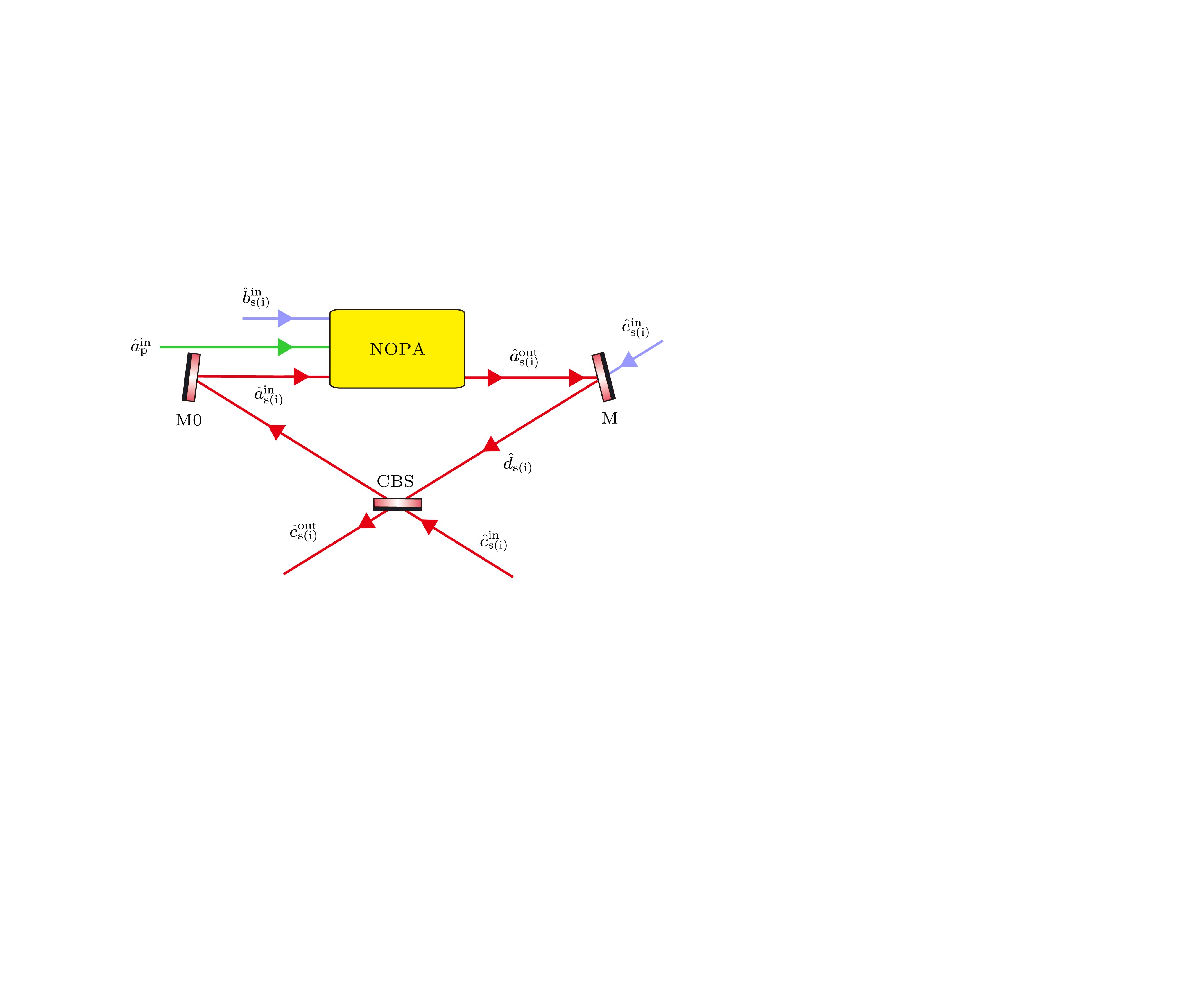
 下载:
下载:
